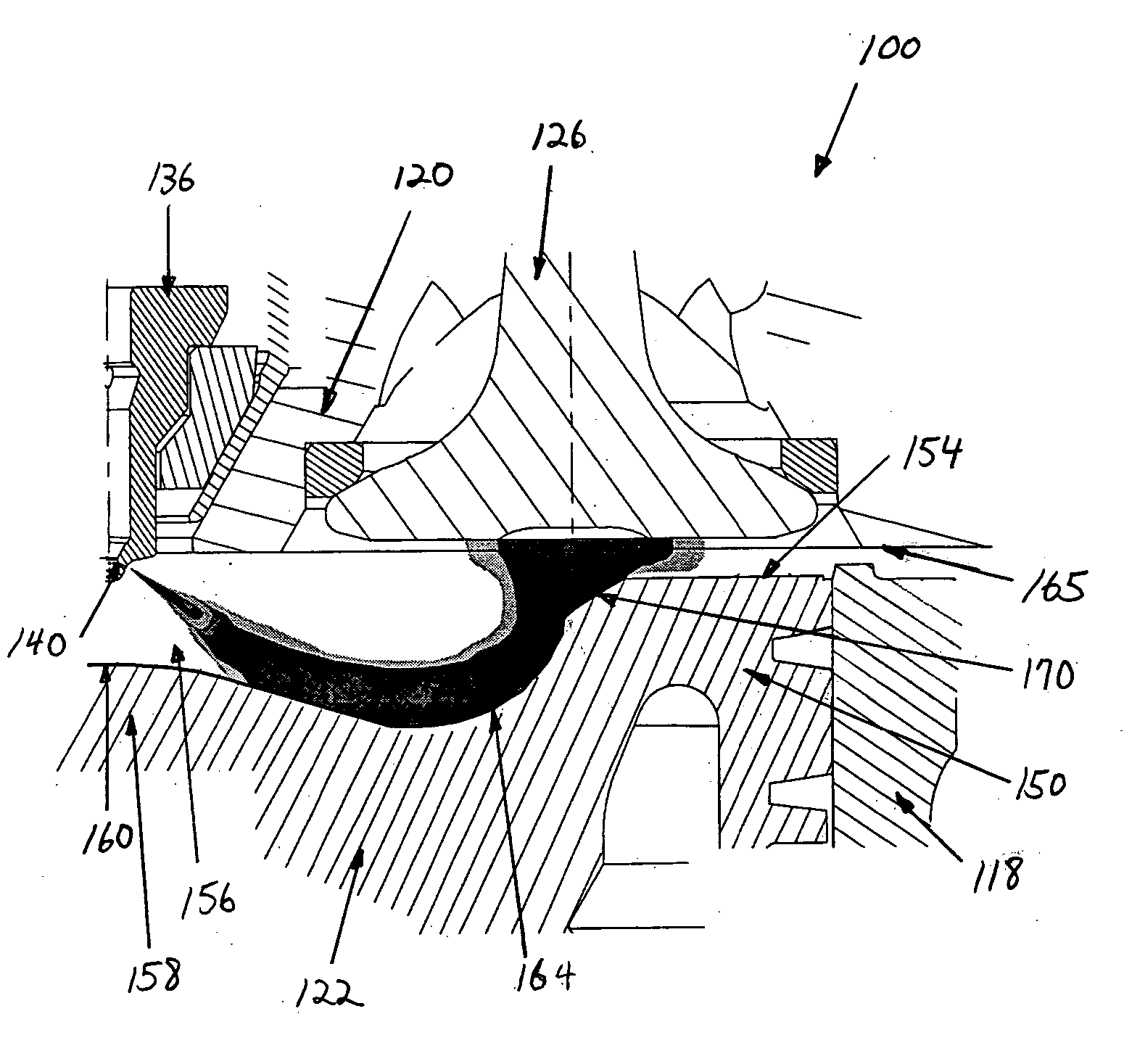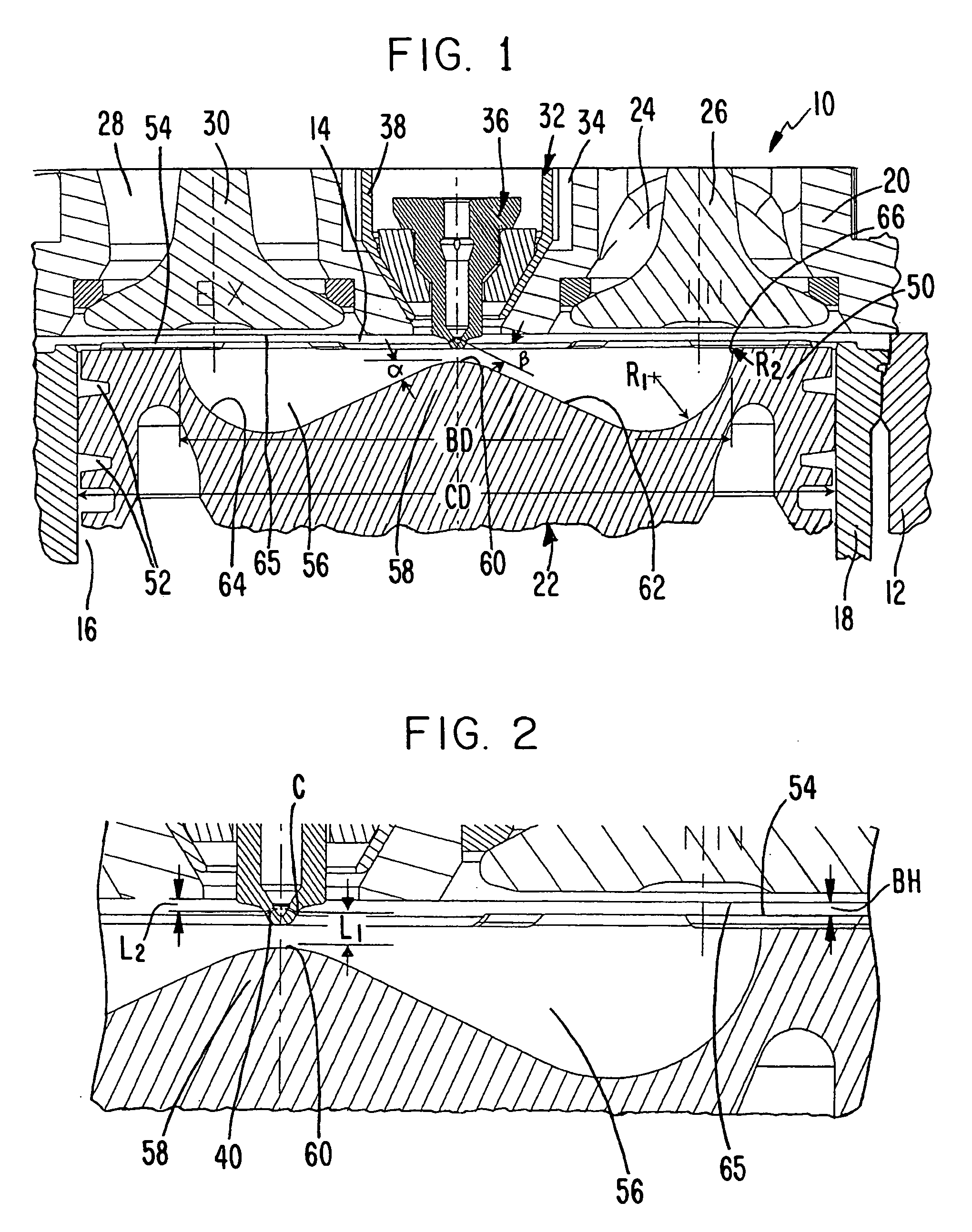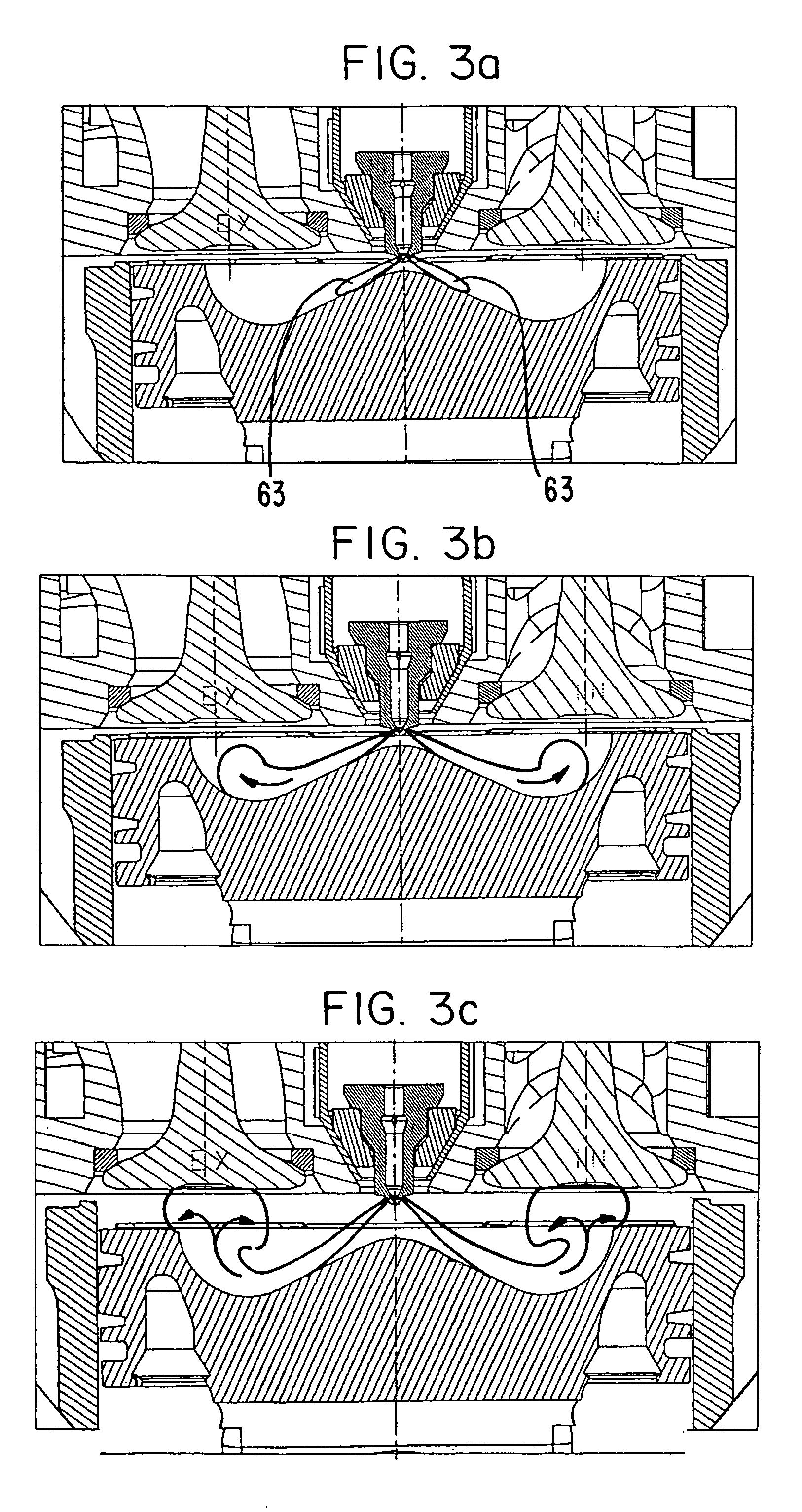Internal combustion engine producing low emissions
a combustion engine and low emission technology, applied in the field of improved engines, can solve the problems of engine designers, emissions exceeding the acceptable limit, and another standard being exceeded, and achieve the effect of reducing undesirable engine emissions sufficiently
- Summary
- Abstract
- Description
- Claims
- Application Information
AI Technical Summary
Benefits of technology
Problems solved by technology
Method used
Image
Examples
Embodiment Construction
[0033] Referring to FIG. 1, the present invention is directed to an internal combustion engine, a portion of which is shown in a cutaway cross sectional view and generally indicated at 10, capable of producing emissions, e.g. NOx and particulates, at levels significantly lower than emissions levels produced by conventional engines and below recent government regulated limits. As discussed hereinbelow, engine 10 includes various precise configuration parameters resulting in a combustion process which achieves desired combustion characteristics for producing acceptably low emissions satisfactory to meet newly adopted engine operating standards applicable to diesel engines including both low noxious emissions and low particulates, while achieving desirable fuel economy and efficiency.
[0034] Engine 10 includes an engine block, only a small portion of which is illustrated at 12, and at least one combustion chamber 14. Of course, the engine may contain a plurality of combustion chambers,...
PUM
 Login to View More
Login to View More Abstract
Description
Claims
Application Information
 Login to View More
Login to View More - R&D
- Intellectual Property
- Life Sciences
- Materials
- Tech Scout
- Unparalleled Data Quality
- Higher Quality Content
- 60% Fewer Hallucinations
Browse by: Latest US Patents, China's latest patents, Technical Efficacy Thesaurus, Application Domain, Technology Topic, Popular Technical Reports.
© 2025 PatSnap. All rights reserved.Legal|Privacy policy|Modern Slavery Act Transparency Statement|Sitemap|About US| Contact US: help@patsnap.com



